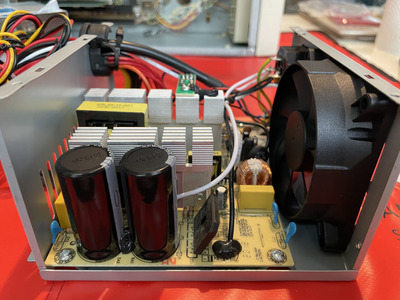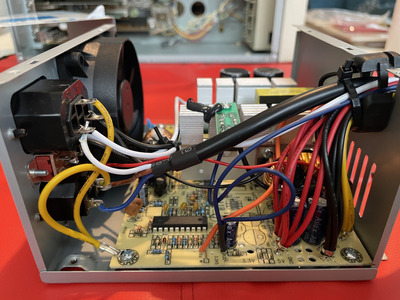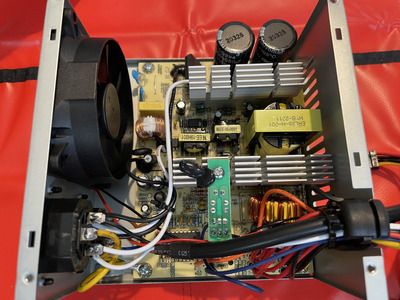First post, by joed96
Hello,
I'm hoping to seek some advice from some power supply experts. Super short story is that I'm seeing 13V on my 12V line with 2 brand new AT power supplies, and the voltage increases under load. Slightly longer story...
I'm building out a retro PC with an ASUS P5A-B, K6-2 500Mhz, S3 Trio64V+, NIC, USB card, and a pair of SSDs connected through SATA to IDE adapters. The case arrived with a power supply, but as I've never really dug into power supplies and don't feel comfortable checking the capacitors etc on an older power supply, I immediately replaced it with a brand new Athena 400W AT power supply. I've been using the system off-and-on for about a month without any issues, but haven't fully built it out as I'm waiting for a couple final parts.
I tried to replace that video card with a Voodoo 3 3000 AGP card. When powering up the system, the BIOS displayed an error that the 12V input is high, at around 13-13.1V. I actually have two of the new Athena power supplies, so tried the other one and again observed 13-13.1V.
So taking a step back, with the power supply on it's own (no load, just input power and a digital multimeter), I'm getting the following voltages:
* 12V = 12.68V
* 5V = 5.31V
* -5V = -5.00V
* -12V = -12.06V
I couldn't be happier with the -12V and -5V lines, but the 12V and 5V lines are just above the +/- 5% thresholds. I am aware from other threads that testing with no load isn't particularly useful and also that the voltage may come down with load applied. So, I thought to put the system back together and test with a full system. This is where I'm getting a bit confused...
With the system put back together and using the S3 Trio64V+, the 12V line voltage increased to 12.99V. When I swapped out the video card for the Voodoo 3, the voltage increased further to 13.09V. This is tested with a digital multimeter, not looking at BIOS values. I didn't go past the BIOS while running this test, so again the load on the power supply wouldn't be high.
Given that I've used two brand new power supplies, it seems less likely that there is a power supply issue (although I can't rule out a bad batch). Perhaps I need to fully boot the system up and get some more load on it to see if the voltage levels out to a good place. However, I'm worried about whether the high voltage would cause any problems to my components if I run the system long enough to test this.
That's where I've gotten to, and would certainly appreciate any guidance or knowledge anyone might be able to offer.
Cheers!



